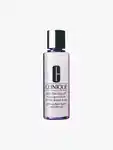Makeup Remover
Call in the removalists!
24 results
24 results
Sort by




Election Winner


Refillable
Refill
Showing 24 of 24
Related Categories
- 54
- 29
- 93
- 114
- 29
- 217
- 416
Makeup Removers
We know you know how important makeup removal is – clean skin is key, and a cleansed complexion means your makeup will apply evenly, and wear better and longer. Which is why having makeup remover on hand at all times is so essential (plus it means you can easily tidy up any stray lines or misplaced product!). Browse MECCA's range of makeup remover products, from hydrating micellar water to makeup wipes, for even the most long-wearing waterproof formulas and the most sensitive skin.


